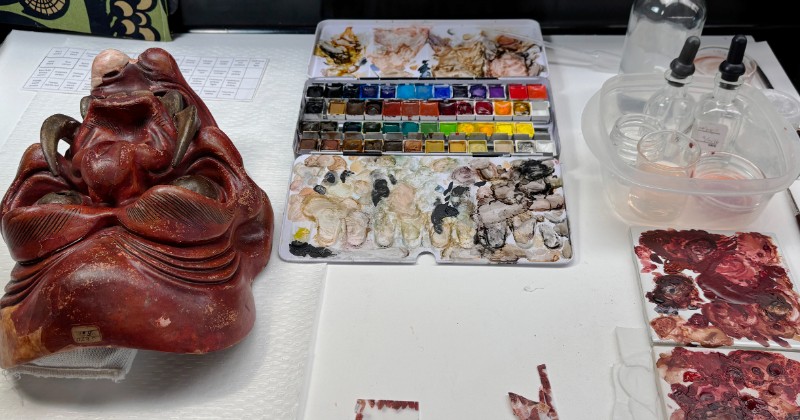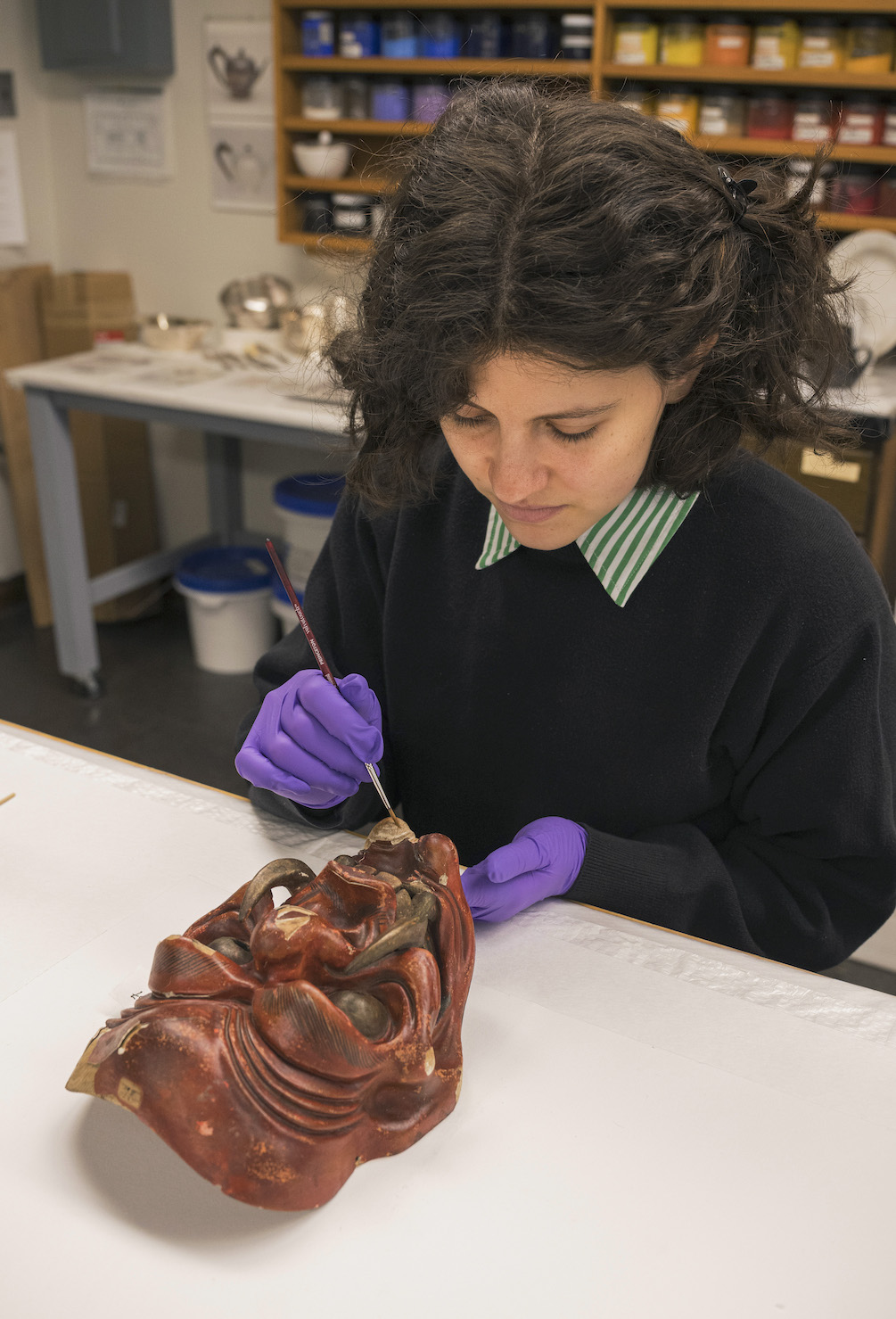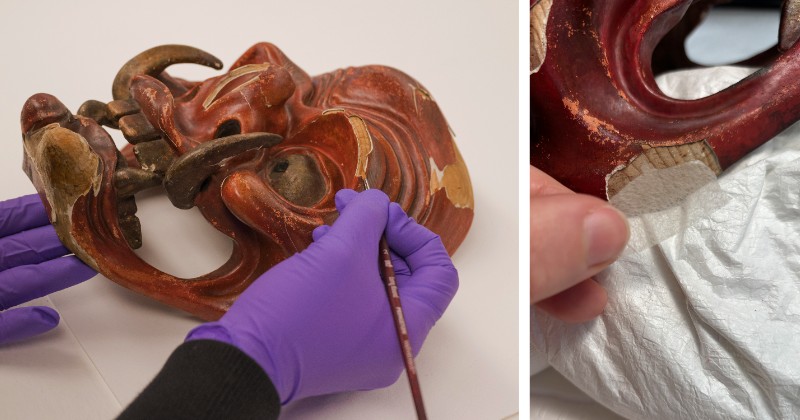
Category: Art Conservation

Art conservation and collaboration
June 16, 2025 Written by Lisa Chambers | Image courtesy of Daisy Diamond
Daisy Diamond grew up just outside Philadelphia with a deep love of art and a curiosity that couldn’t be confined to a single path. “I tried out many jobs that you can do with art,” she recalls, “art therapy, scientific illustration, metal fabrication, working as an artist’s assistant, art education…” Each experience deepened her appreciation for art, but none fully satisfied her wide-ranging interests. When Daisy, an Art and Visual Culture major at Bates College, discovered conservation, something clicked. After an internship at New York’s Museum of Modern Art, the collaborative aspects of the work intrigued her further. “Everybody has such a unique perspective, and we’re consulting other conservators all the time, but also people in the craft traditions of the materials we’re working with, curators, scientists and art historians.”

Now a second-year objects major at WUDPAC, Daisy brings that collaborative spirit to her treatment of a Japanese Bugaku mask thought to be from the late Edo or early Meiji period during the 1800s from the Penn Museum collection. The mask is attributed to Nasori, a traditional Bugaku imperial court dance in Japan that includes two performers and quick free-flowing movements that emulate two dragons at play. “The Bugaku performance dates back to approximately 500 C.E.,” Daisy said. “It’s still performed to this day.”
“For the mask I’m working on, I actually consulted a dance historian,” she said, describing her research on the carved wooden mask. Based on additional conservations with lacquer experts, Daisy noted that “the color was thought to be lacquer, but it’s become more of a question mark whether it’s lacquer or paint.”
The object arrived with layers of the red paint or lacquer lifting away from the surface beneath. “The wood over time has shrunk, and the exterior layer has warped slightly,” she explained. After gently removing dust from the inside, she used pyrolysis gas chromatography mass spectrometry (Py-GC/MS), which helps identify materials by analyzing how they break down under heat, to characterize the materials and select the most appropriate adhesive, rabbit skin glue, to stabilize the thin, brittle, and warped surfaces. She applied the adhesive prior to using the shimbari technique, which involves the use of flexible rods to apply constant, gentle pressure to reattach delaminating lacquer. “It couldn’t really be treated with any other method,” she said. Daisy’s goal is clarity, not reconstruction. “I’m trying to match the surrounding colors and bring back some of the legibility,” she explains. “This mask likely had a whole lived history of performance. And I’m hoping to honor that with this treatment.”

